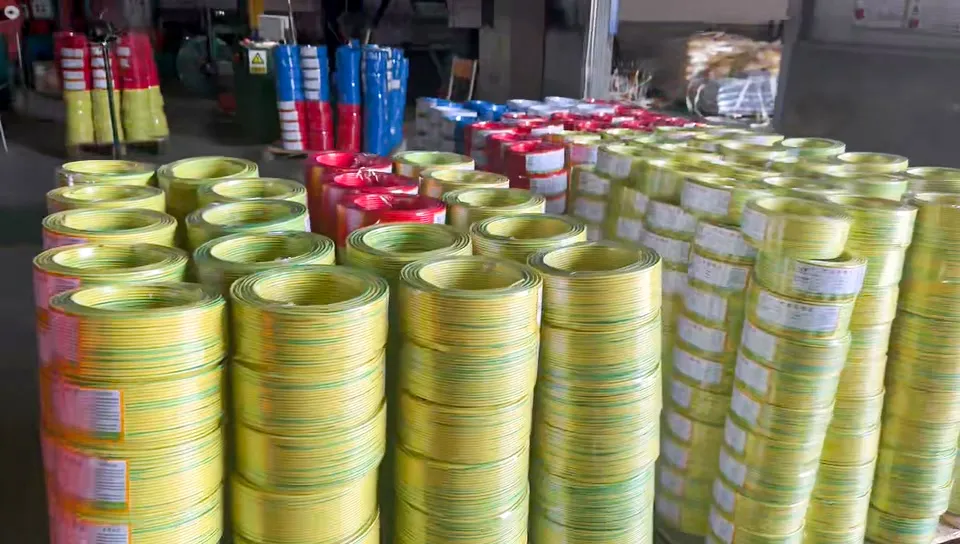Time: 2025-06-02 14:18:06 Source: Henan Province Jianyun Cable Co., Ltd.

Building wire is the essential conductor system used to distribute electrical power and lighting throughout residential, commercial, and industrial structures. At its core, building wire consists of one or more insulated copper or aluminum conductors designed to carry specific voltage levels and currents safely. These conductors are encased in insulating materials—such as PVC, rubber, or other polymers—to prevent electrical leakage and protect against environmental factors like moisture and mechanical damage.
Building wire serves as the “circulatory system” of any electrical installation, routing electrical current from service panels to outlets, fixtures, and appliances throughout a structure. Unlike flexible appliance cords, building wire is generally more rigid and is intended for permanent installation within walls, floors, ceilings, conduits, or raceways.
Copper vs. Aluminum: Copper is the most common conductor material due to its excellent conductivity and ductility. Aluminum conductors are sometimes used for larger feeders or branch circuits, though they require special consideration for termination due to potential oxidation and thermal expansion differences.
Solid vs. Stranded: Smaller gauges (14 AWG to 10 AWG) are often solid for building wire, as these circuits usually remain stationary. Larger conductors (8 AWG and above) are typically stranded to improve flexibility during installation, though they remain less pliable than appliance cords.
Thermoplastic Insulation (e.g., PVC, nylon): Insulation materials like PVC (Polyvinyl Chloride) and nylon jackets are common for building wire, offering moisture resistance and a 600 V rating for most residential and commercial circuits.
Rubber-like Synthetics: In certain industrial or underground installations, rubber-like synthetic polymer insulation is used for superior moisture resistance and UV protection.
NM-B is the most widely used building wire for residential branch circuits. It consists of two or more insulated conductors and a bare ground conductor, all wrapped in a non-metallic sheath. NM-B is suitable for dry, interior applications such as lighting and receptacles in walls and ceilings.
THHN is a single-conductor building wire with PVC insulation and a nylon jacket, rated for up to 600 V at 90 °C in dry locations. It is commonly pulled through conduits or raceways for branch circuits, feeders, and appliance wiring. THWN (Thermoplastic Heat- and Water-resistant Nylon-coated) offers similar characteristics but with moisture resistance suitable for wet locations.
Armored cable (AC) and metal-clad cable (MC) incorporate one or more insulated conductors enclosed in a flexible metal armor for mechanical protection. These types are prevalent in commercial and industrial settings, especially where exposed wiring is subject to impact or in situations requiring enhanced grounding.
UF cable resembles NM but has solid thermoplastic insulation and an overall jacket designed for direct burial or wet locations. It can be used for outdoor fixtures, underground feeder runs, and areas where moisture exposure is likely.
Residential Wiring: NM-B (“Romex”) is standard for most home wiring, including lighting, receptacles, and small appliance circuits.
Commercial and Industrial Installations: THHN/THWN conductors are pulled through metal or plastic conduits for branch circuits, motor leads, and control wiring. MC or AC cable is used in areas requiring mechanical protection or interim staging before installation of rigid conduit.
Specialty and Outdoor Circuits: UF cable is deployed for outdoor lighting, underground feeders, and pool or spa circuits where moisture resistance is critical.
Fixture and Equipment Wiring: Flexible fixture wire (e.g., TFFN or THHN) is used within luminaires and enclosed equipment where minimal movement occurs.
Voltage and Temperature Ratings: Most building wires are rated for 600 V and maximum temperatures of 60 °C to 90 °C, depending on insulation type and application (dry vs. wet).
National Electrical Code (NEC): The NEC governs the installation of building wire, specifying allowable wire types, ampacity (current-carrying capacity), conduit fill, and grounding requirements. Conductor size must match circuit overcurrent protection to prevent overheating.
Color Coding and Identification: Insulation colors often indicate function: black/red (hot), white (neutral), green/bare (ground) in the U.S. NEC prescribes color coding to ensure proper connections and safety.
Environmental and Mechanical Protections: Wires used in damp or wet locations require moisture-resistant insulation (e.g., THWN, UF), and exposed runs in commercial settings often need metallic protection via conduit or armored cable.
Building wire encompasses a family of insulated conductors—most commonly copper or aluminum—designed for permanent installation within the walls, ceilings, floors, and conduits of residential, commercial, and industrial structures. These conductors are rated up to 600 V and are available in various gauges, insulation types, and configurations (solid, stranded, sheathed, or armored) to meet diverse circuit requirements. Compliance with the NEC ensures that building wire installations maintain proper ampacity, grounding, and environmental protection, thereby safeguarding both property and occupants.